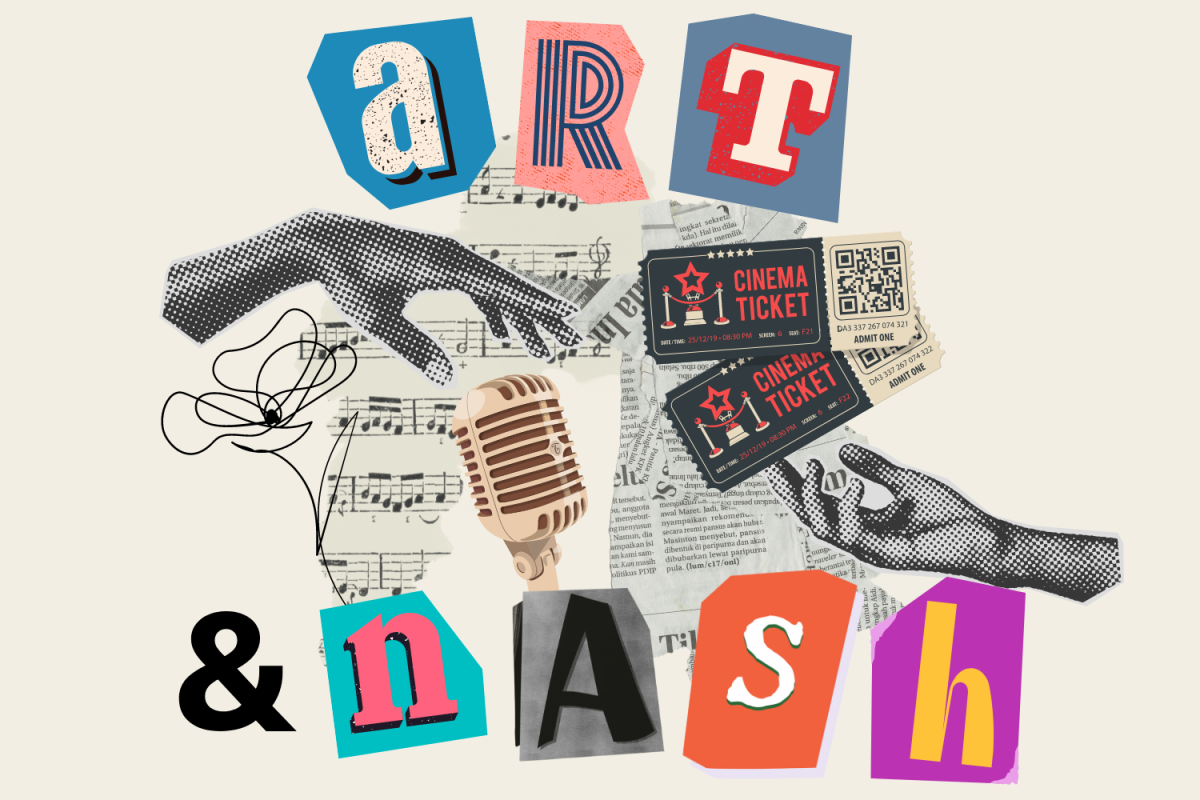Have you ever loved a painting so much that you wanted to jump into it?
I have—and I practically did. At an experience where history meets the contemporary, the Lighthouse ArtSpace provides a venue for one of many Immersive Van Gogh exhibits across the country. Just a 10-minute drive from campus, Nashville’s version of the exhibit made Van Gogh’s paintbrush its own, bringing his most famous paintings to life using modern animation.
The Lighthouse ArtSpace looks like a normal building from the outside, nothing out of the ordinary for a city that has its fair share of extraordinary architecture (check out the piano-printed exterior of the Country Music Hall of Fame or the grand interior of the Schermerhorn Symphony Center if you don’t know what I mean). But the second I stepped into the building, I was greeted with all things Vincent van Gogh.
The main entrance leads directly to the gift shop, where you can find anything from “Starry Night” beanies to “Café Terrace at Night” bathrobes. From there, the walls of the long hallway leading to the exhibit itself are filled with short accounts of the major events in Van Gogh’s life. They detail his extremely Christian family background, his artistic mentorship by cousin Anton Mauve, his first major painting (“The Potato Eaters”), his move to Paris and his struggle with bipolar disorder. The hallway even features a mural depicting the Nashville skyline in Van Gogh’s post-Impressionist short-stroke painting style.

The exhibit itself is centered around a half-hour-long animation of the multitude of works that arose from Van Gogh’s complex, imaginative mind—reflecting his happiest moments as well as his descent into madness. It was not quite like anything I have ever seen before.
Projected onto every inch of the venue—which probably looked like an average warehouse when not in use—the exhibit completely transformed the room into several paintings. I felt like a member of the family depicted in “The Potato Eaters,” a people-watcher walking the streets of Arles in “Café Terrace at Night” and a regular parishioner of “The Church at Auvers.” In my mind, I was not a mere spectator; I was in the scenes Van Gogh so carefully and masterfully created with the oil strokes of his brush almost 150 years ago.
Digital artist and exhibit designer Massimiliano Siccardi effortlessly connected Van Gogh’s paintings, making them flow into each other as if they were all part of a single, bigger story. Somehow, the swirls in the sky of “Farmhouse in a Wheatfield” could easily become the upturned leaves of “The Mulberry Tree.” However, the enchanting visuals were far from the extent of the immersive experience. Even with all its sensory appeal, the exhibit would not have been complete without all the elements that contributed both physically and emotionally to the atmosphere. The venue containing the exhibit consisted of two rooms, giving guests a choice as to whether they preferred a closed-in, cozy feel or an open one. Each of the rooms contained several benches where guests could sit to enjoy the film. Some of the walls of the smaller room were covered with mirrors for visual effect, and the bigger room contained a large mirror-like crystal on the ground that reflected the projections of all four walls. After I exited the room, I was told by some of the employees that the mezzanine viewing area was just up the stairs, and I discovered that from there, I could observe all the people in the rooms I had just been in down below.

Adding to the exhibit was the breathtakingly curated soundtrack by Italian entrepreneur Luca Longobardi. The music was set to a perfect volume—certainly loud enough to block out any thoughts that might threaten to invade the peace of the exhibit but not so loud that you came out of the exhibit with ringing ears. Famous instrumental classics like J. S. Bach’s Cello Suite No. 1 in G Major and Promenade from Modest Mussorgsky’s Pictures at an Exhibition joined tunes like Charles Dumont’s composition “Non, je ne regrette rien” to accompany the slowly but majestically moving swirls of the film projection.
The walls of my Vanderbilt dorm room contain a poster of “Starry Night,” postcards of Michelangelo’s “The Creation of Adam” and Hokusai’s “The Great Wave off Kanagawa” and a small canvas rendition of my own recreation of Munch’s “The Scream.” Going to Lighthouse ArtSpace’s Immersive Van Gogh exhibit undoubtedly satisfied the famous-painting kick that I am clearly on, at least for Van Gogh’s work. My only regret is that I didn’t have a good-quality Canon camera with me to capture the captivating images I saw that day.









